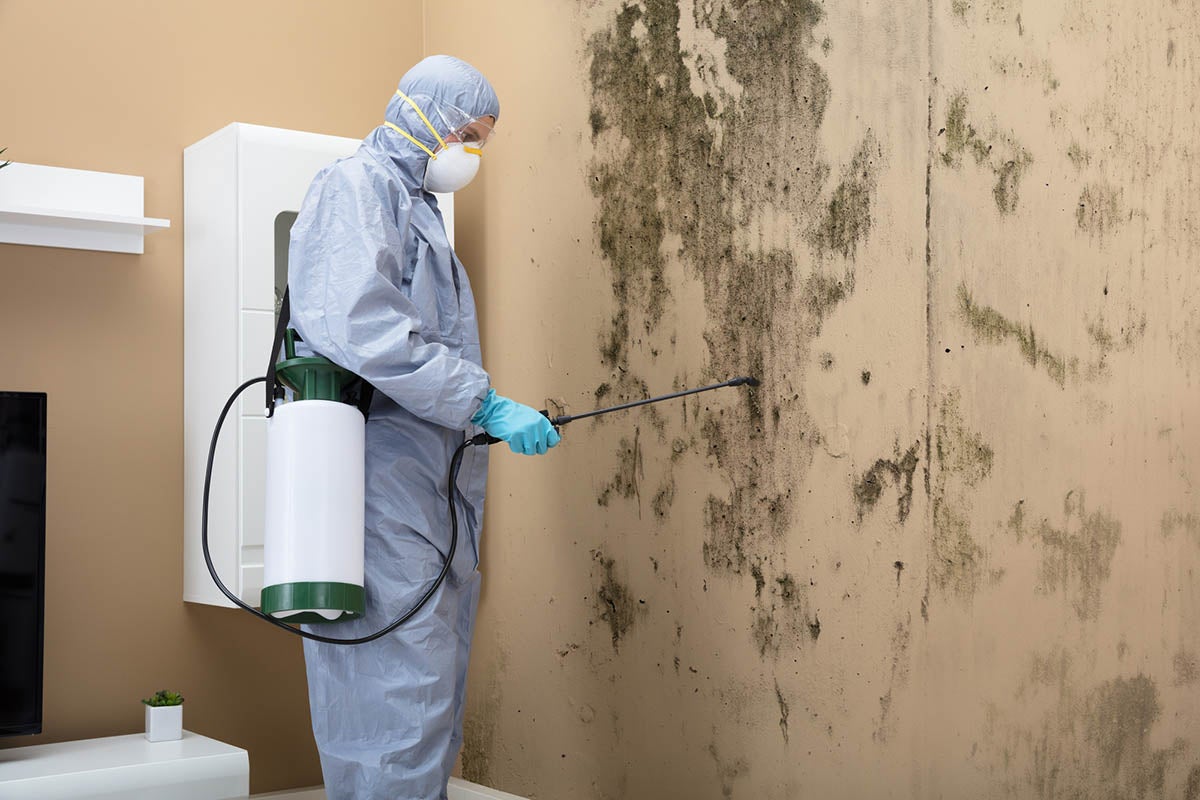Your Ultimate Overview to Article Mold Removal Methods
Navigating the world of post-mold removal methods is a meticulous procedure that demands interest to information and an extensive understanding of the ins and outs involved. In the after-effects of mold and mildew infestation, knowing just how to effectively eliminate the mold and mildew and avoid its reoccurrence is vital for preserving a healthy and balanced interior environment. From choosing the right cleaning and decontaminating approaches to implementing strategies for long-lasting mold prevention, each step in the remediation trip plays an important duty in making sure an effective end result. As we get started on this exploration of post-mold remediation techniques, we will uncover the crucial methods and best techniques that can aid you restore your room to its pre-mold condition and guard it against future mold and mildew hazards.
Understanding Post-Mold Remediation Refine
After completing the mold and mildew removal procedure, it is essential to understand the post-mold removal methods that are needed to make sure a thorough and reliable cleanup. Once the mold and mildew has actually been removed, the next action includes cleaning and decontaminating the influenced areas to stop any regrowth of mold.
Additionally, performing a last evaluation post-remediation is essential to guarantee that all mold and mildew has actually been successfully eliminated. This inspection needs to involve an extensive visual check as well as possibly air tasting to validate the lack of mold spores airborne. Added remediation may be needed if the evaluation exposes any type of sticking around mold and mildew. Educating passengers on preventative procedures such as regulating moisture levels and quickly dealing with any type of water leaks can help maintain a mold-free environment.
Effective Cleansing and Decontaminating Techniques

Protecting Against Future Mold And Mildew Development

Importance of Correct Air Flow
Correct ventilation plays a vital function in stopping moisture build-up, an essential factor in mold growth within indoor atmospheres. Reliable ventilation systems help remove excess humidity from the air, lowering the possibilities of mold and mildew spores finding the moisture they need to spread and sprout. Without adequate ventilation, indoor areas can become a breeding place for mold, resulting in prospective health and wellness risks and structural damage.
By ensuring appropriate air blood circulation, ventilation systems can likewise assist in drying moist locations faster after water damage or flooding events, even more hindering mold and mildew development. what to do after mold remediation. Precede like bathrooms, kitchen areas, attic rooms, and basements where dampness levels often tend to be higher, setting up and preserving efficient ventilation systems is critical in avoiding mold invasions

Surveillance and Maintenance Tips
Given the important duty that appropriate air flow plays in stopping mold growth, it is important to develop efficient surveillance and upkeep suggestions to guarantee the ongoing capability of ventilation systems. Normal examinations of ventilation systems ought to be performed to check for any type of indications of clogs, leaks, or breakdowns that might hinder proper air movement. Monitoring moisture degrees within the home is also crucial, as high humidity can add to mold development. Mounting a hygrometer can aid track moisture degrees and alert property owners to any type of spikes that may call for attention. In addition, making certain that air filters are on a regular basis cleansed or replaced is vital for preserving the effectiveness of the ventilation system. Carrying out a timetable for regular maintenance tasks, such as air duct cleaning and cooling and heating system inspections, can assist prevent problems prior to they intensify. By remaining positive and attentive to the condition of ventilation systems, homeowner can effectively minimize the risk of mold and mildew regrowth and preserve a healthy indoor atmosphere.
Verdict
Finally, post-mold removal strategies are crucial for making certain a risk-free and tidy atmosphere. Recognizing the procedure, carrying out efficient cleansing and disinfecting techniques, protecting against future mold growth, preserving appropriate ventilation, and regular tracking are all vital action in the remediation procedure. By following these guidelines, you can efficiently remove mold and mildew and prevent its return, functioning or promoting a healthy and balanced living space for all passengers.
In the after-effects of mold problem, knowing just how to efficiently remove the mold and mildew and prevent its reoccurrence is extremely important for maintaining a healthy interior atmosphere. When the mold and mildew has actually been eliminated, the next step involves cleansing and decontaminating the impacted areas to my link prevent any type of regrowth of mold - Post Mold Remediation Report. After removing noticeable mold and mildew growth, it is critical to clean all surfaces in the damaged location to get rid of any continuing to be mold and mildew spores. To further boost mold and mildew prevention procedures, it is important to resolve underlying issues that initially led to mold advancement.Offered the crucial role that correct ventilation plays in avoiding mold and mildew development, internet it is important to develop efficient tracking and upkeep ideas to make certain the ongoing capability of air flow systems
Comments on “Assistance on What to Do After Mold Remediation”